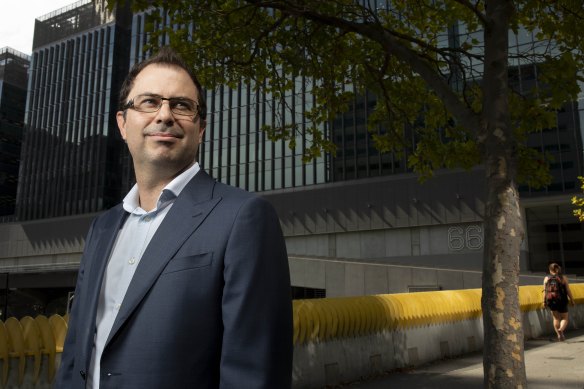Why young workers are fleeing Sydney’s wealthy suburbs
By Matt Wade
The number of prime-aged workers is shrinking across Sydney’s eastern suburbs, inner west and lower north shore as young families are priced out of inner-city suburbs.
The population of well-located inner-city districts fell by between 1.3 per cent and 2.7 per cent between 2019 and 2023, despite growth of 3.7 per cent in Greater Sydney over that period.
There were sizeable declines in the number of people aged between 20 and 64 years in affluent neighbourhoods close to the CBD including Leichhardt (-3.5 per cent), Canada Bay (-2.7 per cent), North Sydney-Mosman (-2.5 per cent) and eastern suburbs south (-2.4 per cent), analysis by KPMG shows. But the number of residents aged 65 and over grew in each of those areas.
KPMG urban economist Terry Rawnsley warned that demographic trends in well-located Sydney suburbs are putting extra stress on transport and housing infrastructure as outer suburbs accommodate a disproportionate share of new residents.
“Despite being areas with exceptional access to jobs and excellent local infrastructure, inner-city suburbs of Sydney are seeing a decline in population simply because young people can’t afford to live there,” he said. “As workers move farther from city centres, the strain on transport and local infrastructure in suburban areas intensifies, raising implications for urban planning.”
This inefficient allocation of resources is sapping productivity and threatens to hamper the city’s economy in the long term.
A sharp fall in births has contributed to the inner-city population slump. Last year Sydney’s fertility rate (the number of children women can be expected to have during their lifetime) reached a historic low of 1.57 – way short of the 2.1 “replacement level” needed to maintain a stable population, not including migration. Fertility rates hit very low levels in most inner-city suburbs including Chippendale (0.63), Darlinghurst (0.69) and Newtown (0.84).
“Families are increasingly moving to greenfield areas, where although the residential land is more available, there are significant challenges in accessing essential services and employment opportunities,” said Rawnsley.

Urban economist Terry Rawnsley warns population trends are putting additional pressure on Sydney’s housing resources and transport infrastructure Credit: Arsineh Houspian
The NSW government has made lifting housing supply a top priority and aims to build 377,000 homes over the next five years, 70 per cent of them in Sydney. Research published recently by the NSW Productivity and Equality Commission found the eastern suburbs and north shore had Sydney’s greatest unmet demand for housing.
Rawnsley said population patterns showed “there’s not enough additional new housing” being added in inner-city areas to attract younger residents.
Almost one-third of Sydney’s statistical districts had fewer people in 2023 than in 2019; the biggest fall in eastern suburbs north (-3512).
But numbers surged in the city’s outer north-west and south-west led by the Blacktown North, which added nearly 50,000 people in that period.
“Housing affordability is reshaping Sydney’s urban fabric at a remarkable speed, presenting a myriad of challenges for families and those tasked with planning our communities’ infrastructures,” Rawnsley said.
While inner suburbs of Sydney are losing young people, working-age populations in comparable areas of Brisbane and Perth grew strongly between 2019 and 2023.
Start the day with a summary of the day’s most important and interesting stories, analysis and insights. Sign up for our Morning Edition newsletter.